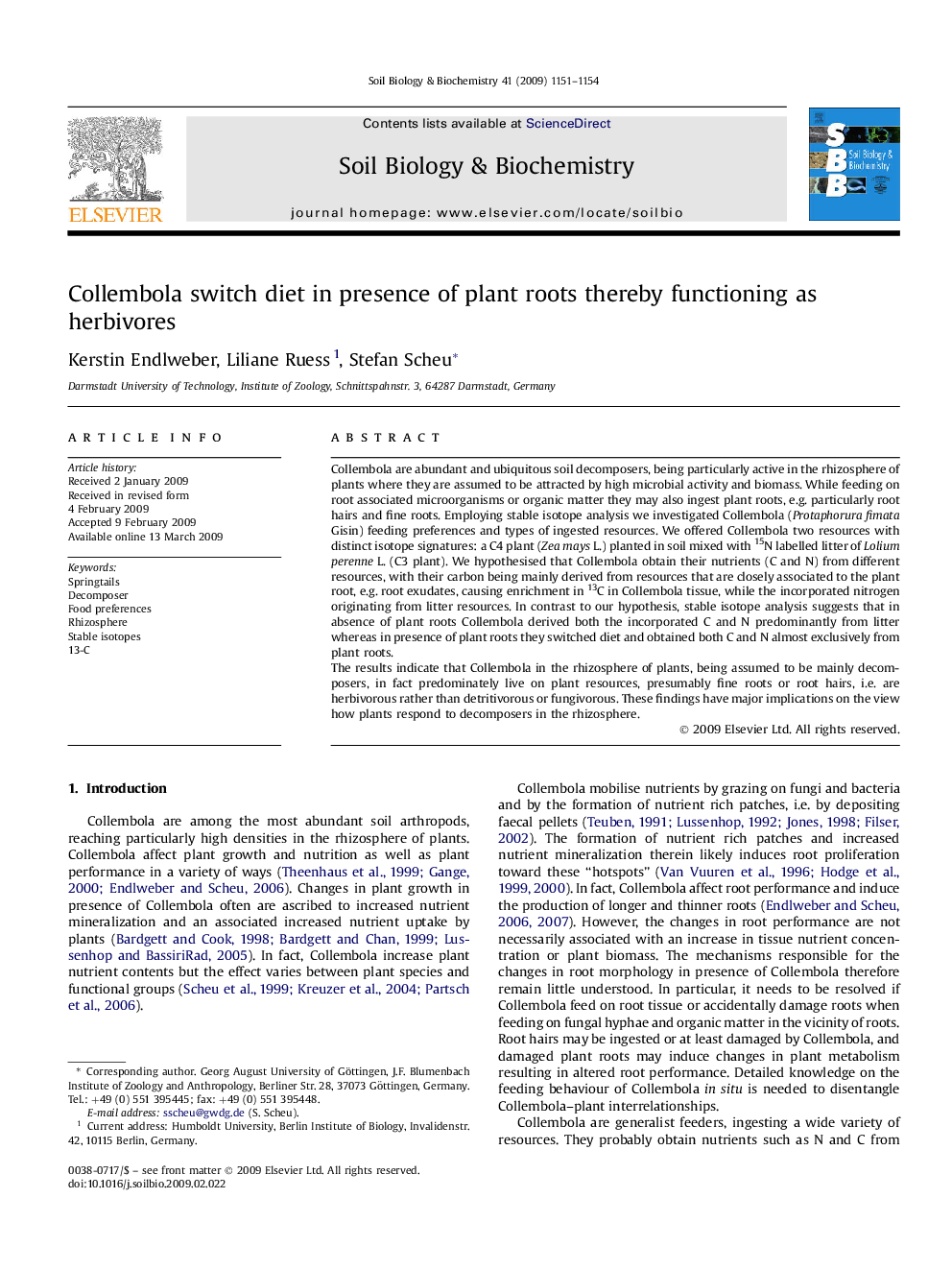| Article ID | Journal | Published Year | Pages | File Type |
|---|---|---|---|---|
| 2025616 | Soil Biology and Biochemistry | 2009 | 4 Pages |
Collembola are abundant and ubiquitous soil decomposers, being particularly active in the rhizosphere of plants where they are assumed to be attracted by high microbial activity and biomass. While feeding on root associated microorganisms or organic matter they may also ingest plant roots, e.g. particularly root hairs and fine roots. Employing stable isotope analysis we investigated Collembola (Protaphorura fimata Gisin) feeding preferences and types of ingested resources. We offered Collembola two resources with distinct isotope signatures: a C4 plant (Zea mays L.) planted in soil mixed with 15N labelled litter of Lolium perenne L. (C3 plant). We hypothesised that Collembola obtain their nutrients (C and N) from different resources, with their carbon being mainly derived from resources that are closely associated to the plant root, e.g. root exudates, causing enrichment in 13C in Collembola tissue, while the incorporated nitrogen originating from litter resources. In contrast to our hypothesis, stable isotope analysis suggests that in absence of plant roots Collembola derived both the incorporated C and N predominantly from litter whereas in presence of plant roots they switched diet and obtained both C and N almost exclusively from plant roots.The results indicate that Collembola in the rhizosphere of plants, being assumed to be mainly decomposers, in fact predominately live on plant resources, presumably fine roots or root hairs, i.e. are herbivorous rather than detritivorous or fungivorous. These findings have major implications on the view how plants respond to decomposers in the rhizosphere.
